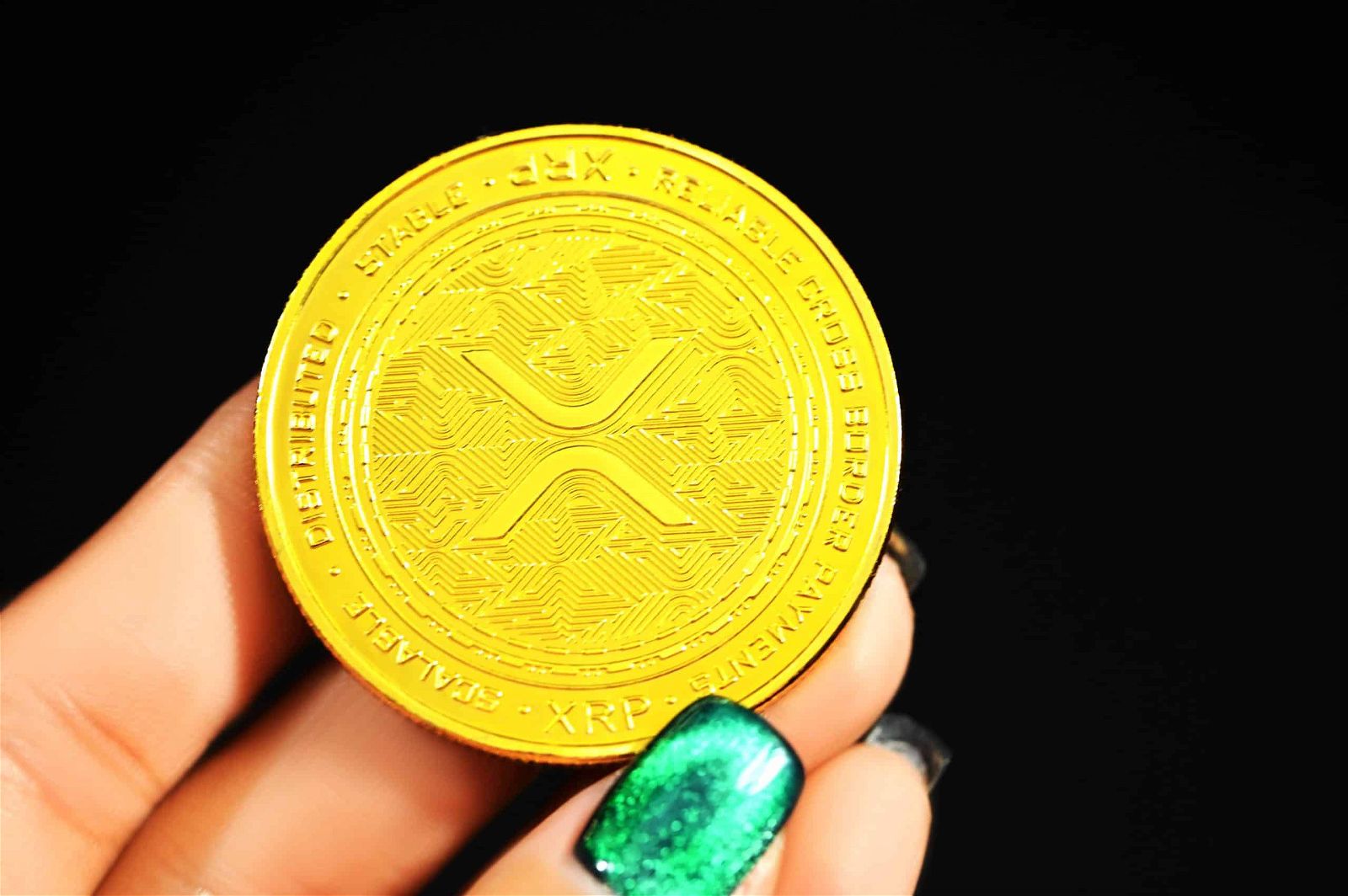Web 3.0
What is XRP? A Detailed Overview of the Ripple Ecosystem
Discover the revolutionary Ripple ecosystem and delve into the world of XRP in our blog. Learn about its features, benefits, and impact on cross-border transactions. Stay informed.
Published
2 years agoon

The financial industry has been undergoing significant transformations with the advent of blockchain technology. One of the emerging players in this space is Ripple and its native cryptocurrency, XRP.
This guide aims to provide an entire overview of Ripple, exploring its history, operations, advantages, challenges, and role in the larger ecosystem of digital finance.
Ripple: An overview

Exploring Ripple (XRP) – Image via Unsplash
Ripple, developed by Ripple Labs, was introduced in 2012 as an innovative financial technology. It’s a decentralized platform designed to facilitate frictionless cross-border transactions using its digital payment protocol and native crypto token, XRP.
Ripple aims to enhance banking efficiency by leveraging blockchain technology in a slightly different way compared to other public and permissionless blockchains.
The genesis of XRP
Ripple’s history traces back to 2005 when RipplePay, a global payment platform, was founded by software developer Ryan Fugger. In 2011, Jed McCaleb and Chris Larsen began developing a new system for distributed digital payments, which led to the creation of XRP.
By 2012, the XRP Ledger was launched, and the team reached out to Fugger to utilize RipplePay’s network, leading to the establishment of Ripple Labs.
Ripple in financial technology
Ripple’s primary function is to provide a network that allows financial institutions worldwide to make cross-border transactions faster, cheaper, and more reliable. Its suite of products and initiatives includes RippleNet, Ripple Protocol, XRP Ledger, and Interledger Protocol (ILP). Ripple’s network, RippleNet, is a payment network designed to revolutionize cross-border transactions by replacing the current SWIFT messaging network.
Ripple’s native cryptocurrency, XRP, serves as a bridge currency and a settlement layer within its globally accessible network, facilitating efficient transactions. By using XRP, Ripple aims to enhance liquidity when necessary, acting as a bridge between two currencies.
Ripple and XRP: An intrinsic connection
While Ripple is the company behind XRP, the two are distinct entities. Ripple is a network used by banks for transaction settlement, while XRP is the digital asset used within the Ripple network.
Also, XRP provides liquidity when necessary, acting as a bridge currency to offer financial institutions a more cost-effective way to exchange both crypto and fiat currencies.
The Ripple ecosystem: An inside look
Ripple’s ecosystem is expansive, comprising RippleNet and the XRP Ledger (XRPL). RippleNet represents an alternative to the SWIFT network, aiming to transform and speed up cross-border funds transfer through blockchain technology. On the other hand, the XRP Ledger is a decentralized, open-source blockchain that processes and verifies transactions on the network.
Two critical aspects of the Ripple ecosystem are XRP and RippleNet. XRP is known as the native cryptocurrency of the Ripple ecosystem, acting as a settlement layer and facilitating seamless and efficient transactions within the network. Simultaneously, RippleNet is a payment network with the potential to revolutionize cross-border transactions by replacing the current SWIFT messaging network.
If you’re a crypto enthusiast, don’t miss out on the latest details on Shibarium.
Exploring Ripple’s key features
Key features of Ripple
Here are a few key features of Ripple that pave its path toward the future. Take a look:
1. Fast transactions
XRP offers rapid transaction settlement, with an average confirmation time of around 3-5 seconds, making it one of the fastest blockchain-based payment networks.
2. Scalability
XRP Ledger can process a high number of transactions per second, making it well-suited for handling large transaction volumes, a crucial factor for financial institutions.
3. Liquidity bridge
XRP serves as a bridge currency, facilitating cross-border payments by converting from one currency to XRP and then to another currency. This minimizes fees and transaction times.
4. Low transaction costs
XRP transactions typically involve low fees, making them cost-effective for both individuals and businesses, particularly for micropayments.
5. Decentralization and consensus
XRP employs a unique consensus algorithm called the Ripple Protocol Consensus Algorithm (RPCA), ensuring network agreement among validators and maintaining decentralization while preventing the “double-spending” problem.
Additionally, these features collectively position XRP as a digital asset that aims to revolutionize cross-border payments and remittances by offering speed, cost-effectiveness, and seamless connectivity to traditional financial systems.
XRP‘s unique consensus mechanism
Unlike Bitcoin or Ethereum, XRP doesn’t use proof of work (PoW) or proof of stake (PoS). Instead, it employs a unique consensus mechanism known as the Ripple Protocol Consensus Algorithm (RPCA).
This consensus mechanism relies on Unique Node Lists (UNL), where each node in the network considers the votes of nodes in its UNL to reach a consensus about a state or value in the network.
XRP: Advantages and possibilities
XRP offers several advantages for its users. It provides flexibility since it has fewer nodes on RippleNet than other popular blockchains, which means transactions are easily editable.
Ripple also boasts speed, thanks to its UNL mechanism, which enables faster transaction speeds. Furthermore, Ripple’s scalability allows it to handle a large number of transactions simultaneously.
XRP’s potential drawbacks
However, Ripple’s ecosystem isn’t devoid of potential risks. Ripple is more centralized than most blockchains due to its permission-based blockchain model.
Also, the allocation of XRP contributes to Ripple’s centralization. Since the Ripple Foundation owns most of the supply, it has the power to influence the token’s price.
The future of Ripple and XRP
Ripple and XRP have shown promise for the future, especially with the growing interest in blockchain technology for cross-border transactions. Ripple is continuously evolving, with ongoing collaborations with community members to define a shared vision statement.
The outcome of this collaborative effort will undoubtedly shape the future of Ripple. It will also impact the role of Ripple in the digital finance ecosystem. As Ripple continues to move forward, strengthen its partnerships, and enhance its technology, it stands as a testament to the revolutionary potential of blockchain technology in transforming the financial industry.
With its unique consensus mechanism, scalability, and commitment to offering efficient, fast, and low-cost transactions, Ripple can play a significant role in the future of digital finance.
Looking to learn more about blockchains? Why not build one of your own? We have covered the basics of blockchain for you in our comprehensive guide.
Investing in XRP
Summing up
Ripple and its native cryptocurrency, XRP, represent a significant evolution in the world of financial technology. By offering a faster, more scalable, and cost-effective solution for cross-border transactions, Ripple is transforming the way we think about financial transfers.
Despite facing potential risks and regulatory hurdles, Ripple’s commitment to innovation and its expanding ecosystem make it a key player in the blockchain industry’s future. However, whether you’re a developer, investor, or just a curious observer, keeping an eye on Ripple and XRP’s progress follows an exciting journey.
